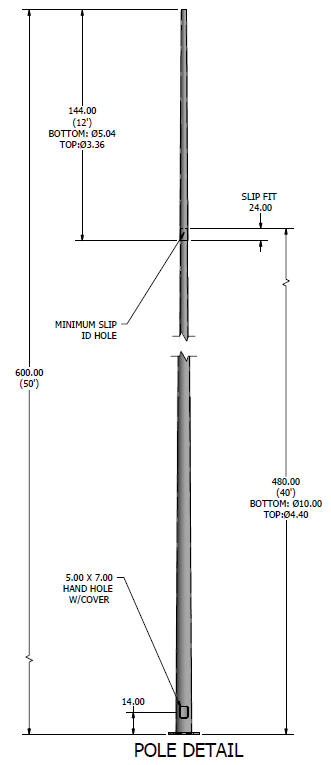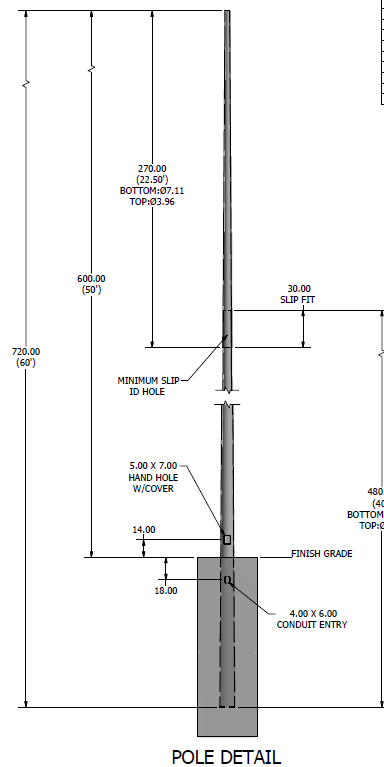
The choice between anchor-based and embedded installation for your light poles comes down to location, aesthetics, and budget. Here’s what you need to know.
Anchor-Based Poles
Anchor-based poles include a metal base plate welded to the shaft of the pole. This plate provides provisions for typically three to six anchoring bolts. When the concrete footing is poured, anchor bolts are “cast” into the mold and emerge above the surface. The protruding area of the bolts attach to the light pole’s base.

Embedded Poles
Embedded, or direct burial, poles are installed directly into the ground. As a result, the poles don’t require a base plate and anchor bolts, creating a cleaner look. A longer shaft is required for embedded installation to compensate for the length of pole buried in the ground. To determine the total pole length required, the general rule is to take 10% of your ideal fixture mounting height and add 2 feet. For example, a fixture mounting height of 20 feet requires that 4 feet be buried, equaling a 24-foot pole.
Because they eliminate the need for anchor bases, embedded poles are less time- and cost-intensive to install. However, they’re not ideal for sandy areas or locations with loose soil. The embedded portion would need to be significantly increased to accommodate such conditions.

At United Lighting Standards, we provide both anchor-based and embedded installations for light poles. Click here to view our products.





